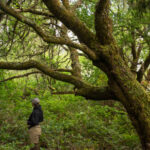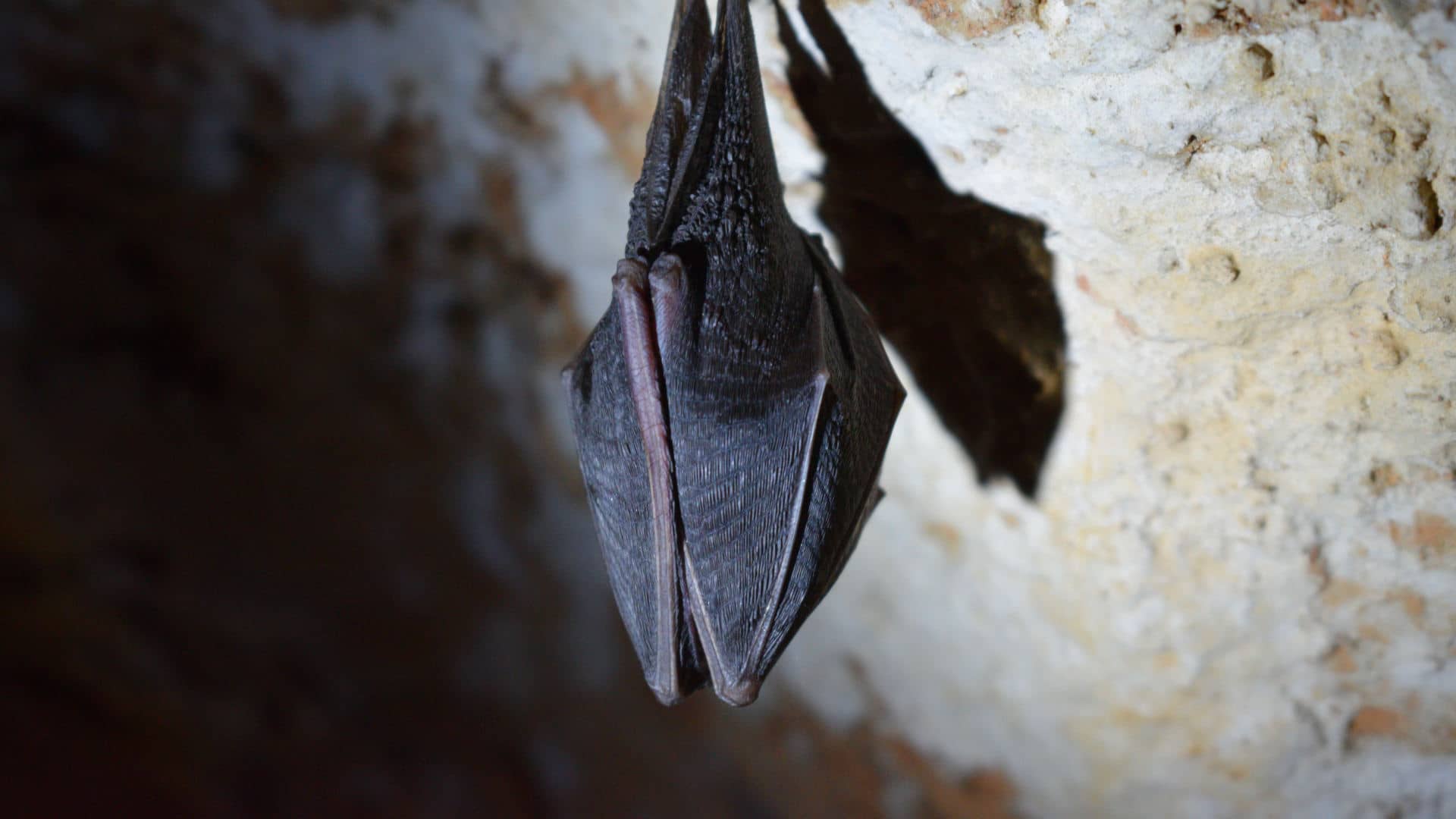On Jan. 14, an international team of experts arrived in Wuhan, China to investigate the origins of SARS-CoV-2, the virus that causes Covid-19. For four weeks, the World Health Organization-convened team — which included epidemiologists, virologists, and specialists in veterinary medicine — interviewed people in Wuhan, reviewed hospital records, and even analyzed sales data from retail pharmacies.
Their much-anticipated report, released on Tuesday, rehashes conclusions familiar from weeks of press conferences and communications: The team believes that the coronavirus likely passed from an animal, probably a bat, to humans, either directly or through some intermediate animal host. They describe the theory — heavily pushed by the Chinese government, and widely dismissed by scientists — that SARS-CoV-2 arrived in Wuhan via frozen foods as “a possible pathway” for the virus. Meanwhile, the team describes another theory, the “introduction through a laboratory incident,” as “an extremely unlikely pathway.”
Instead of offering clear answers, the report promises to intensify speculation about the origins of a virus that has shut down entire countries and killed an estimated 2.8 million people worldwide.
At least in the U.S., the report appears at the same time that the lab-leak hypothesis has begun to gain mainstream attention, including recent coverage in USA Today, on NPR, and on “60 Minutes,” the iconic CBS News show. Critics, including the governments of the U.S. and other countries, have charged the Chinese government with giving the WHO team too little access to important data. Those critics appeared to receive support on Tuesday from WHO Director-General Tedros Adhanom Ghebreyesus, who said the independent team’s investigation of a laboratory incident was not “extensive enough,” and called for “further investigation, potentially with additional missions involving specialist experts, which I am ready to deploy.”
As Charles Schmidt reported for Undark last month, the idea that SARS-CoV-2 may have accidentally escaped from a lab has become highly politicized, with partisans wielding it to attack China or criticize scientific researchers. Amid the finger-pointing, the whodunit drama, and the geopolitical wrangling, it can be easy to overlook the actual stakes of the investigation: to collect information that will help scientists and policymakers prevent future pandemics.
Since the 1990s, researchers have warned of the growing risk that emerging infections pose to the world. Even before SARS-CoV-2 swept around the world, Ebola, Zika, the H1N1 flu, and SARS triggered serious recent outbreaks with global repercussions. Today, Schmidt writes, “pandemic preparedness faces two simultaneous fronts.” Researchers need to study coronaviruses, influenza viruses, and other pathogens in order to understand and combat them. But sometimes that very research introduces the risk of lab accidents that, some experts warn, could trigger a disaster. The lab-leak dispute is not just about blame or closure; it’s about how to weigh those various risks.
For now, the debate over SARS-CoV-2’s origin is far from over. “Bloody hell,” one virologist told Nature reporter Amy Maxmen, “this will go on for years.”
Also in the News:
• Driven by more infectious coronavirus variants, Covid-19 cases are rising across the United States, with hotspots emerging in Michigan, New York, Massachusetts, and other states. “Right now, I’m scared,” Centers for Disease Control and Prevention Director Rochelle Walensky said in a Monday press briefing, warning that the country was at risk of experiencing a fourth wave of the virus. Anthony Fauci, director the National Institute of Allergy and Infectious Diseases, echoed those concerns, saying that the fast-spreading variants could erase some of the country’s gains in reducing infection, even as vaccinations, which appear to be highly effective against existing variants, protect more and more Americans from Covid-19. Most countries, though, have vaccinated far fewer people than the U.S. — and, in some, variants are driving waves of new cases. In France, infections have risen so sharply that the country’s president ordered a full national lockdown on Wednesday. Eastern European countries are also undergoing a coronavirus wave, with Hungary experiencing some of the highest Covid-19 death rates in the world. Variants are also driving surges in India and Pakistan, as well as in Latin America. “Without preventive action, our region could face an upsurge even larger than the last one,” said the head of the Pan America Health Organization this week. (Multiple sources)
• On Wednesday, President Joe Biden announced a $2 trillion plan to overhaul U.S. infrastructure. The plan earmarks $250 billion for research, according to Science. A fact-sheet provided by the White House in advance of Biden’s announcement, which took place at a carpenters training center outside of Pittsburgh, says that the administration will ask Congress to allocate $50 billion to the National Science Foundation and another $14 billion to the National Institute of Standards and Technology. The plan also calls on Congress to “invest $40 billion in upgrading research infrastructure in laboratories across the country,” with half of the funds going to historically Black colleges and universities and other minority-serving institutions. The plan puts an emphasis on research and development for new technologies, as well as tackling global challenges such as climate change and future pandemics. As Science notes, much of that spending is in line with bipartisan legislation recently proposed in Congress. “We’re one of only a few major economies in the world whose public investment in research and development as a share of GDP has declined constantly over the last 25 years,” Biden told the crowd outside Pittsburgh. “And we’ve fallen back. The rest of the world is closing in and closing in fast. We can’t allow this to continue.” (Science)
• Unaccompanied migrant children held at government facilities near the U.S.-Mexico border are testing positive for Covid-19, raising concerns that overcrowding and unsanitary conditions could be allowing the virus to spread. Reporters who got a rare look inside a facility in Donna, Texas this week published photos of young children packed into playpens — some cared for by older siblings — and families sleeping shoulder to shoulder. According to U.S. Customs and Border Protection, more than 17,600 unaccompanied minors were in government care as of Tuesday — 5,606 in CBP custody and the rest with the Department of Health and Human Services. CBP does not have the capacity to conduct Covid-19 testing itself, but many children are coming up positive once they transfer from CBP custody to other government sites. At the San Diego Convention Center, for instance, which is holding teenagers age 13 to 17, HHS officials told ABC affiliate KGTV that 82 teens have tested positive. And at an HHS facility in Carrizo Springs, Texas, more than 10 percent of children have tested positive for Covid-19, a source with knowledge of the conditions told ABC. In contrast to a Trump administration policy that removed unaccompanied minors from the U.S., Biden has allowed them to stay while their cases are being processed. (ABC News)
• Amid mounting evidence that Black and Brown communities are bearing the brunt of Covid-19’s impacts comes a study suggesting that the pandemic is magnifying health disparities even among people who don’t get the disease. As Amina Khan reports at the Los Angeles Times, researchers at two UCLA Medical Centers examined the rates at which patients were hospitalized for avoidable health problems — including hypertension, diabetes, and urinary tract infections — both before and during the pandemic. African Americans have long suffered such preventable hospitalizations at higher rates than Whites, but the team found that the pandemic had nudged the gap even wider. As many Americans opted to curtail hospital visits during the pandemic, the rate of avoidable hospitalizations fell by more than half for non-Latino Whites, but by just 8 percent, a statistically insignificant amount, for African Americans. The researchers say the results likely stem from Black patients having poorer access to outpatient care, which can prevent minor health issues from growing into major ones. For instance, the researchers noted that, among other things, people of color may be more likely to have a job that doesn’t allow them to take time off to visit a doctor during the day. (Los Angeles Times)
• And finally: On Wednesday, the Environmental Protection Agency announced that it will remove more than 40 outside experts appointed by former president Donald Trump to the Clean Air Scientific Advisory Committee (CASAC) and the Science Advisory Board (SAB), two panels that shape regulatory decisions. The move reflects criticisms that the Trump-appointed advisers were too friendly toward regulated industry, and at times went against scientific consensus. The Biden administration characterized the move as a step toward reestablishing scientific integrity within federal agencies. But the purge, which The Washington Post described as an “unusual decision,” has drawn criticism from some former EPA officials, who argue that the administration is preventing advisory panels from maintaining members with differing viewpoints. Jeff Holmstead, who led the EPA’s Office of Air and Radiation during the George W. Bush administration, complained the decision was “ham-handed” and undermined trust in the agency. Retired EPA employee Chris Zarba countered that the Trump-appointed advisers’ stances “did not accurately represent mainstream science.” (The Washington Post)
“Also in the News” items are compiled and written by Undark staff. Deborah Blum, Brooke Borel, Lucas Haugen, Jane Roberts, and Ashley Smart contributed to this roundup.










